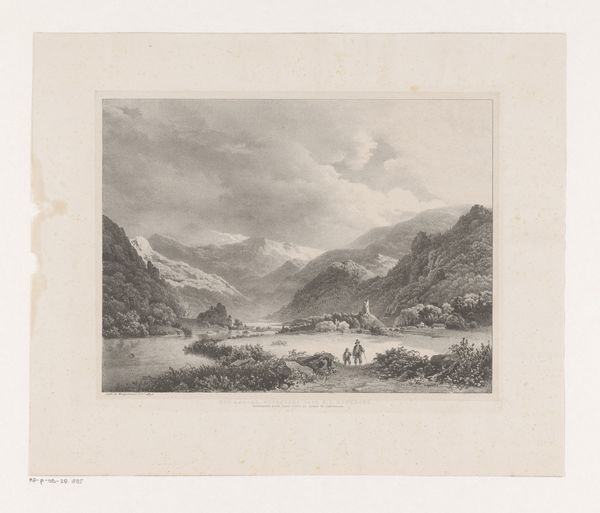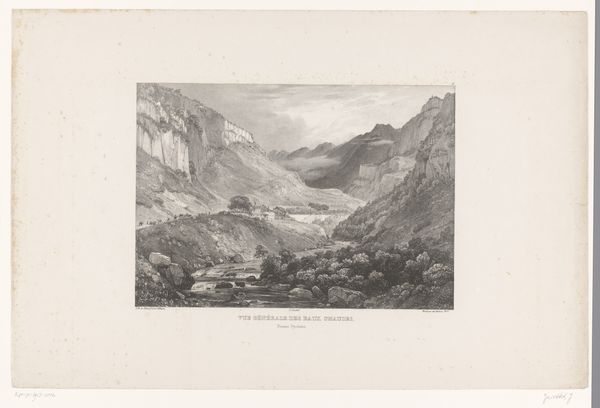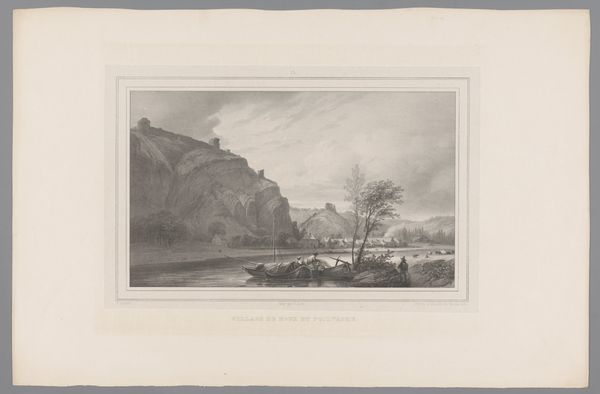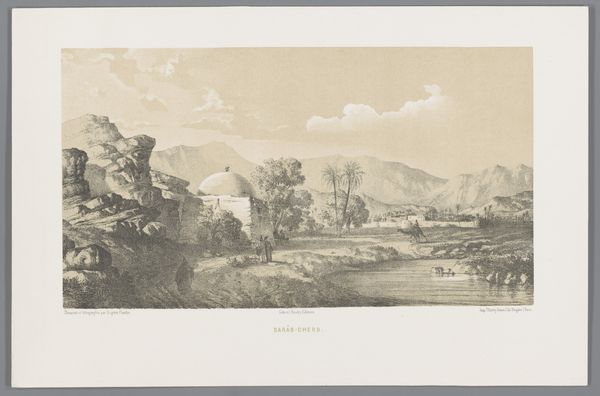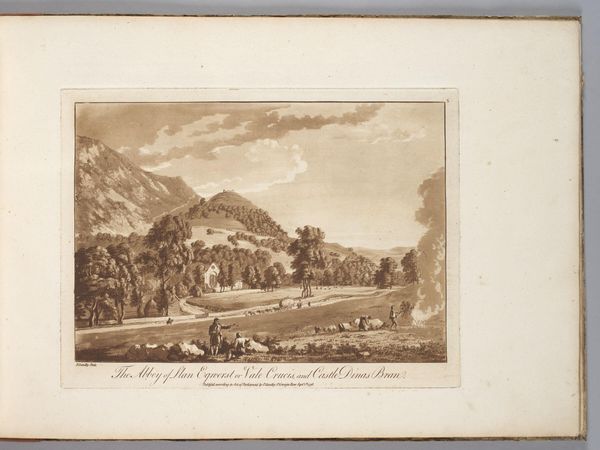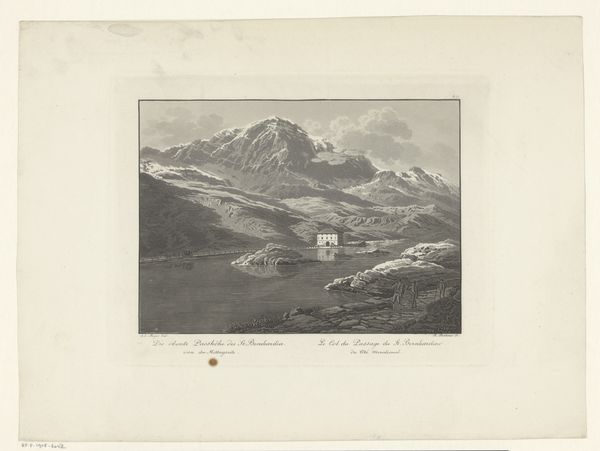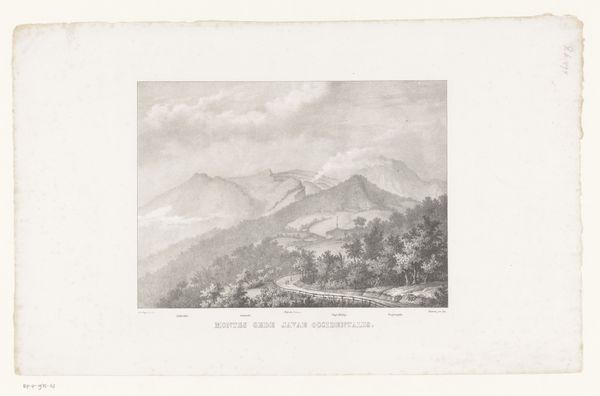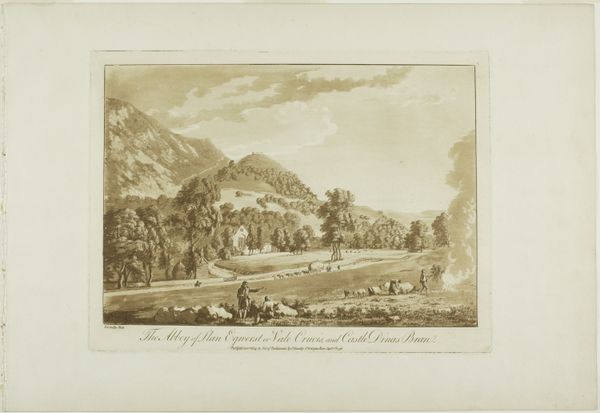
Dimensions: height 360 mm, width 549 mm
Copyright: Rijks Museum: Open Domain
Editor: This print, "Zicht op de Gaustatoppen in Telemark" from 1851, really captures a feeling of serene vastness. I am interested in this tension between a beautiful landscape and sublime scale; I'm wondering, how would you interpret this work? Curator: It speaks of the Romantic era's obsession with the power of nature. Mountain, water, and the human form coalesce, mirroring our psychological responses to the world. Landscape is rarely just landscape: notice how the Gaustatoppen mountain dominates. The mountain becomes a visual metaphor – what do mountains mean in the stories people tell themselves? Editor: Is it meant to portray power or the immensity of nature versus human frailty? Curator: Precisely! And what symbols do we consistently use to represent power? Think of pyramids, towering monuments...Gaustatoppen evokes a similar awe, a silent, watchful figure of ancient power. Do you see how small the figures on the road are, or how the houses appear at the foot of the mountain? Editor: The way the landscape is layered emphasizes the human element's being dwarfed in comparison to nature, almost to nothing! Curator: Yes! This relates to what we were speaking about with the period it comes from; consider what role it would play to someone in the mid-19th century and think about if those messages have lasting continuity. Can you see how those symbolic readings change depending on our viewpoint? Editor: I do. Viewing it from a cultural standpoint really highlights the impact. Curator: Absolutely. Exploring a piece's visual language provides us a peek into collective cultural memory. It reflects the endurance and alteration of meanings across history.
Comments
No comments
Be the first to comment and join the conversation on the ultimate creative platform.
